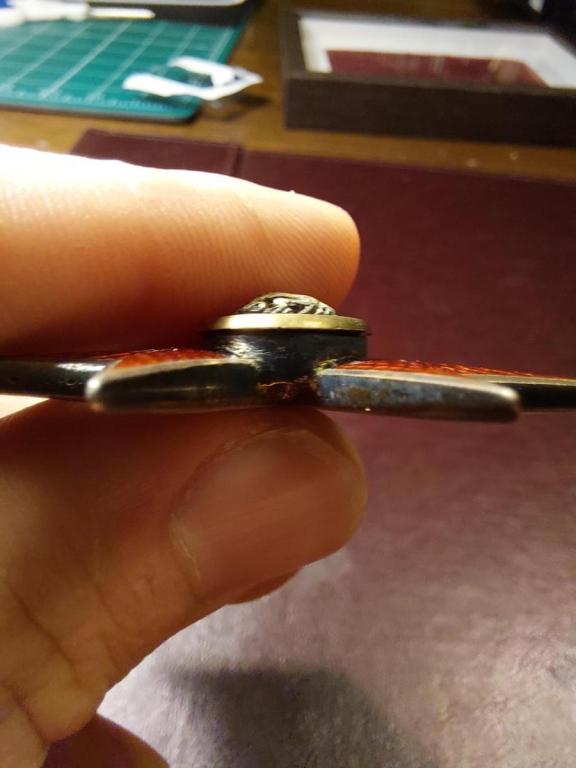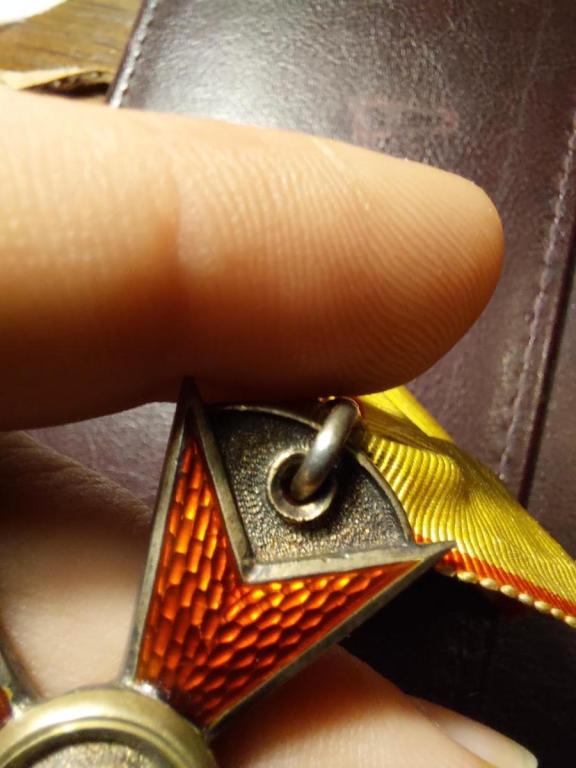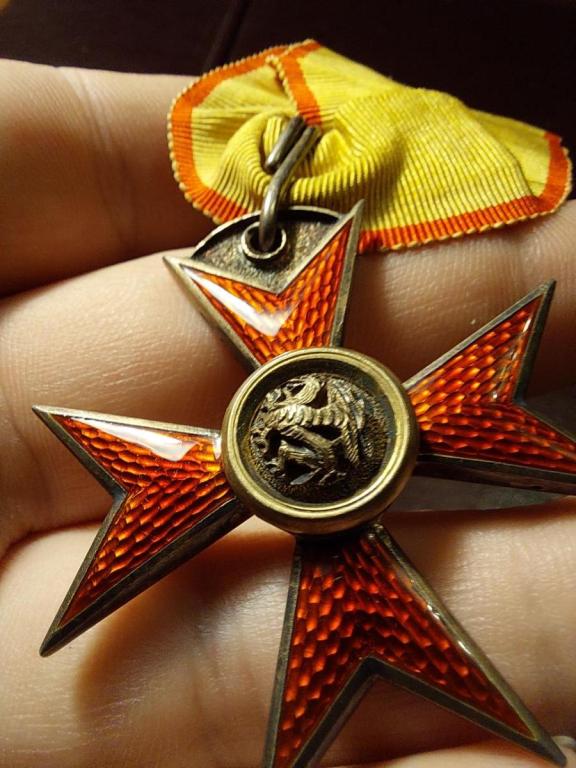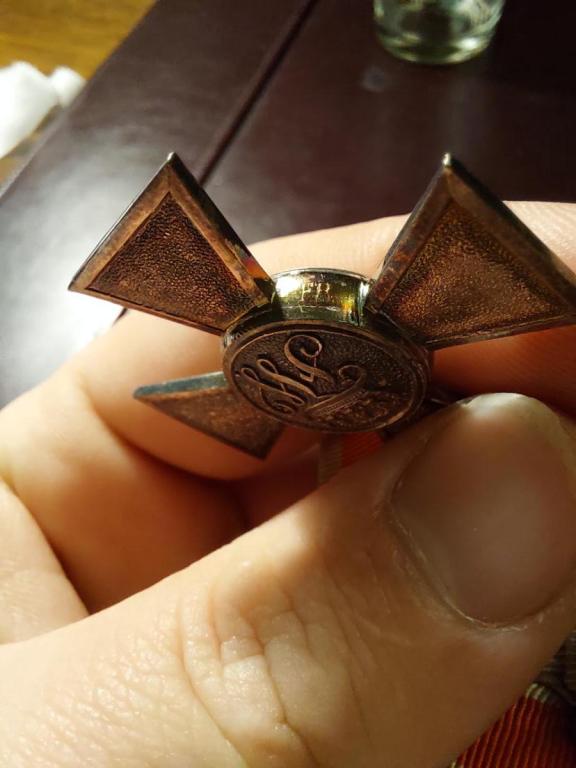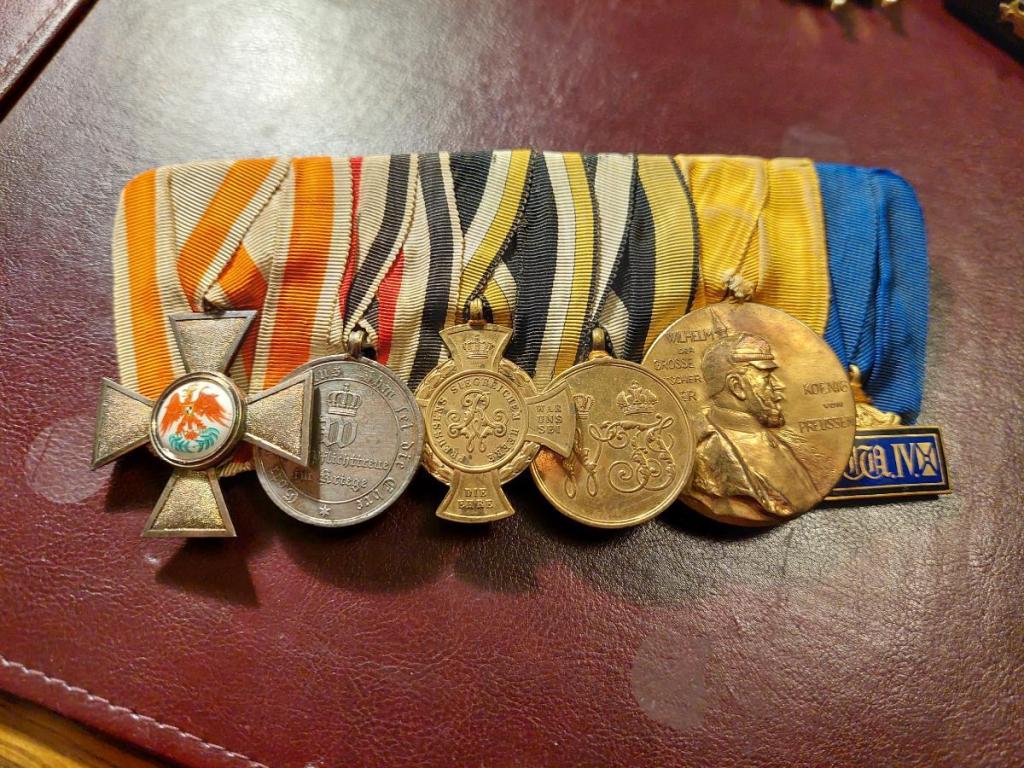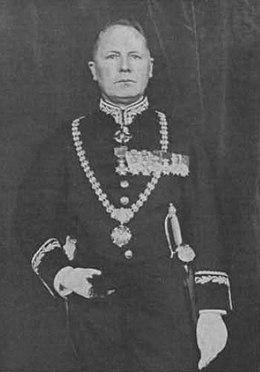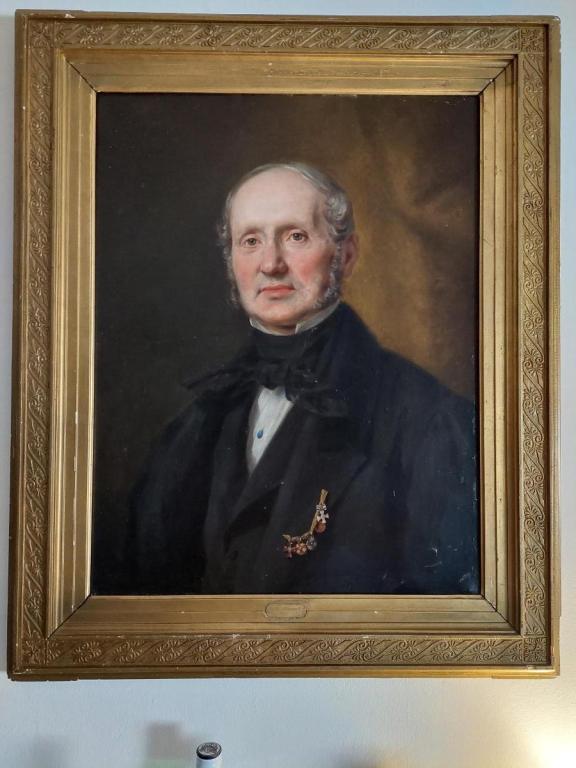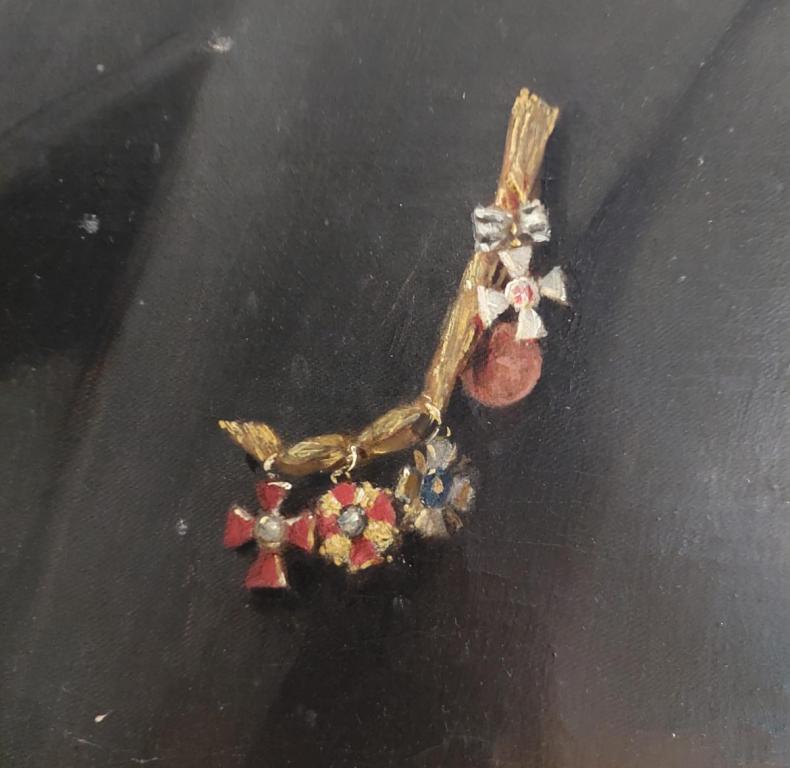-
Posts
674 -
Joined
-
Last visited
-
Days Won
6
Content Type
Profiles
Forums
Blogs
Gallery
Events
Store
Everything posted by laurentius
-
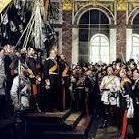
Funny-looking Order of St. Gregory the Great
laurentius replied to laurentius's topic in Southern European & Balkan States
Despite the fact that more than two and a half years have passed since this discussion I would like to announce that I have finally purchased a Order of St. Gregory the Great by Adrien Chobillon. Here you can see it with my Italian made piece by Tanfani and Bertarelli. There are quite a number of differences, not all of them bad. The motto of the order around the medaillon is of lower quality in the piece made by Chobillon, same goes for the enamel and the wreath. The bust of St. Gregory on the medaillon on the other hand is of better quality with Chobillon, which also goes for the filigrain pattern under the enamel. The last thing I noticed with pieces made by Chobillon is that the wreath is the same as the ones used on the Legion D'Honneur. This interchangeability is not astounding, as Chobillon would have quite an amount of them laying around. Not to mention that the construction of the wreath and the attachment to the cross of of good quality, which is lacking sometimes in Italian-made pieces. Quite happy with it, I got it at rather a good price. It's marked twice, once for Adrien Chobillon and once for silver. Kind regards, Laurentius -
i came across a piece written by Eric Ludvigsen for the Orders and Medals Society of America. Although his list is incomplete he gives 344 Ritterkreuze between 1884 and 1896. Of these 180 were given to Germans (people from Mecklenburg counted together with the other German states) and 164 to foreigners (110 Russians, 1 dutchman, 33 french etc.). If Nimmergut is correct that would mean that Mecklenburg-Schwerin only awarded 79 more between 1896 and 1918 which seems most unlikely (given developments within Mecklenburg and Germany as a whole). Interesting is that there have only been four Dutch awards until 1896. If Ludvigsen is correct we can probably do away with the number that Nimmergut puts up. This means that either the number 1000 or 1672 could still be true.
-
Doesn't zuzüglich mean 'to add' which would bring the number to 560 awards between 1884 and 1918? This number would mean 12,41 awards per year for Mecklenburg-Schwerin (423/36) and 9,78 awards per year for Mecklenburg-Strelitz (137/14). This seems logical, given that Mecklenburg-Strelitz was a tad smaller than Mecklenburg-Schwerin. A number of 560 seems more logical given their frequency of appearing on the market but is far off from other sources (also to be found on this forum). I wonder what the reason is for these different numbers? Is there anyone who could eloborate on the 'nachverliehungen' as far as 1941? Kind regards, Laurentius
-
That would mean we now have three different numbers, ranging wildly between 423 and 1672 (a factor of four!). I must say that 423 seems low, given the frequency with which these pieces appear on the market. They aren't common, but certainly not as rare as the number 423 would suggest. Are the rolls from Mecklenburg perhaps incomplete? On the other hand an argument could be made for such a low number given the fact that the two Mecklenburg grandduchies were largely agricultural and some of the least developed areas of imperial Germany. An abscence of artists, industrialist and a larger upper-middle class would explain why so few of them would have been awarded. Does Nimmergut give a differentiation between awards to native Mecklenburgers and others ( I know of atleast 13 Dutch recipients and an Austrian colonel)? Kind regards, Laurentius
-
Hello Dave, Thank you for your reply. If i read your message correctly this would mean that conveying a message of unity was the primary reason with the economic situation as a secondary thought? Do you know why they ceased producing pieces with the gold letters (G,E,B, standing for Georg, Ernst (I and II) and Bernhard)? Kind regards, Laurentius
-
Dear fellow collectors, Whilst researching the Saxe-Ernistine House Order I wondered what the reason was for the combined institution of a House Order across several Thuringian duchies (being Saxe-Altenburg, Saxe-Coburg and Gotha and Saxe-Meinungen and Hildburghausen)? The name suggests, and this is also written in some sources, that it is a clear reference to their common ancestor Ernest I of Saxe-Gotha-Altenburg (nicknamed 'the pious'). I wonder if there might also be an underlying, unmentioned, economic reason for using the same decoration. Surely this would allow for decorations to be made (somewhat) in bulk allowing for better prices at the jewellers? Was this done purely out of respect for Ernest the Pious or was there indeed an economic incentive? Kind regards and thanks in advance, Laurentius
-
Dear fellow collectors, I was able to purchase this unmarked Greifenorden Ritterkreuz (although clearly a Rose production). When doing my research I stumbled upon two different numbers for the total amount of awarded crosses. One quotation was roughly 1000, the other was the far more precise 1672. Does anyone know why these differ and which one (if any) is correct? I wonder if the number 1000 accounts for the Ritterkreuze, whilst the number 1672 might be the total amount of awards (knights, commanders, grandcommanders etc.) Thanks in advance and kind regards, Laurentius
-

Wasa-Order of H. Meixner
laurentius replied to laurentius's topic in Northern European & Baltic States
Perhaps in preparation of the Olympics? I couldn't find any more information on him, he could have worked anywhere in Germany. I might contact the German police, maybe they know something. -
Dear fellow collectors, I was recently able to purchase the Commandeurskruis (commander's cross) of the Order of Orange-Nassau awarded to the Dutch mayor Gerard Abraham Willem ter Pelkwijk. I was aware at the moment of purchase that this piece had belonged to a large group containing amongst others five different European orders together with six Dutch orders, two medals, miniatures, books and other documents. It came from the former collection of Frans Riemersma. This grouping was sold on 13 januari 2022. After the auction it was split up and sold separately. I want to know whether anyone is aware where some of the pieces have ended. Attached you will find a picture of the piece now in my collection (recognisable by the red velvet in the crown), a picture of the grouping at auction and a picture of Ter Pelkwijk himself. Kind regards and thanks in advance, Laurens Stroek
-

Wasa-Order of H. Meixner
laurentius replied to laurentius's topic in Northern European & Baltic States
Thank you for your help, I might investigate a bit further. Kind regards, Laurentius -

Wasa-Order of H. Meixner
laurentius replied to laurentius's topic in Northern European & Baltic States
Thank you for this information. Does it say why he got it? Seems a bit odd that a German police commissioner should receive such an award. That is before the Swedish Orders went dormant in 1975 right? Kind regards, Laurentius -
Dear fellow collectors, Since a few days I have a Wasa-Order 2nd class in my possession which belonged to a certain H. Meixner. He worked as a Kriminalhauptkommissar with the German police. I wonder if anyone could help me find the date of the award and any possible pictures of him? I've tried google, but alas it redirected me to more famous members of the Meixner family. Any help would be appreciated. Kind regards, Laurentius
-
It's the Bulgarian order of Military Merit. It's red enameled and has a tendency to reflect. This is why it appears that the middle of the arms have a different colour which might lead some to conclude a Finnish rather than a Bulgarian decoration. The last two are both Bulgarian in my opinion. Kind regards, Laurentius
-

Netherlands Netherlands Lion Order - different types ?
laurentius replied to lilo's topic in Northern European & Baltic States
Dear fellow collectors, When we discuss orders with the crown fixed directly to the cross what kind of time period are we looking at? Is there any information regarding the change to the 'reversed V'? Kind regards and thanks in advance, Laurentius -
I'd like to think that too, the value would be much higher than the price I payed. I doubt it sadly. The painting is of fine quality (hence the reason I bought it) but it's not quite up to Magnus' standard. It seemed to me more likely to be a portrait of him, especially given that he was mentioned in a 1844 article of the Staatsanzeiger in the same (but somewhat unreadable) paragraph as recipients of the RAO3schl. We have established with Andreas' help that he had the Order of st. Michael. There must surely be more? Kind regards, Laurentius
-
Thank you Andreas, The reason I asked is because I bought this painting for my collection. It shows a man, I think around 50-55 years old with a lovely miniature chain. The painting has a small plaque inscribed with 'Ed. Magnus 1842'. These five decorations, of which three have been identified seem to me as honours which could have been bestowed on a painter. Hence my question whether he had received the RAO3schl. It could be a self-portrait, it could be a painting by Magnus of someone else or it could be a painting not made by Magnus but put in a frame which belonged to a painting by Magnus. Frameswapping is not uncommon, especially with the finer frames we see in the Biedermeier period. I am still looking for the decorations bestowed upon Magnus, we now know he has the Order of St. Michael, which is not shown in the painting. Regardless of who he is I am also trying to figure out his decorations. These are my guesses so far: - Prussia: Red Eagle Order 3. class with schleife - unknown, a medal, probably Prussian - unknown, a cross with swords, silvery colour with blue centre - Russia: Order of St. Stanislaus - Russia: Order of St. Wladimir It seems odd to me that the Order of St. Stanislaus should take precedent, as I thought that the Order of St. Wladimir was higher. Maybe an indication for which class he received? I usually refrain from chains so my knowledge in this field generally comes from their 'big brothers'. I doubt that it is a self-portrait since I didn't read anything about Magnus spending time in the military. If the little plaque is correct this man may also be too old to be Magnus. Kind regards and thanks in advance, Laurentius
-
Dear fellow collectors, I am currently conducting research on the painter Eduard Magnus. I have reason to assume he was awarded the Prussian order of the red eagle third class with schleife (RAO3schl) somewhere during the 1840's. I have scanned the Preußische Staatsanzeiger but the results where inconclusive. He was mentioned in a 1844 article regarding the RAO but it didn't clearly state that he had gotten it. I would also appreciate any information on other decorations received by Eduard Magnus. It is not unlikely that someone who received the RAO3schl had other decorations. All help is appreciated. Kind regards, Laurentius
-
I'm glad to say you are wrong, because this bar is a rare little bird. When it comes to Lippe there were two states: Lippe-Detmold and Schaumburg-Lippe. Due to a succession crisis in the 1890's which required the 'guiding' hand of Emperor Wilhelm II there was still some animosity at the start of WW1. This is the reason why cross-Lippe awardings and recipients with decorations from both states are rare. I can't guarantee an identification, but I believe it is worth a try. Won't be many people with this combo and you could cross of those with additional decorations that do not show up on the bar. Kind regards, Laurentius


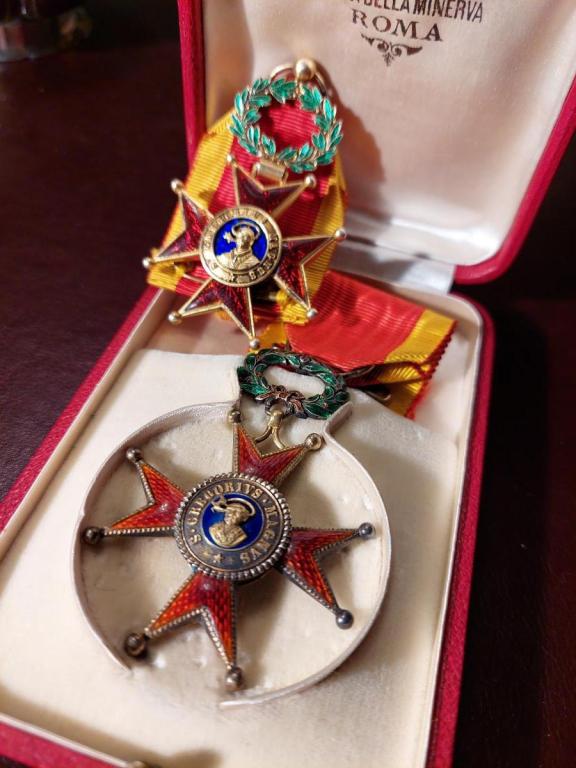
.png.28ebb9ef8c86a56d00630d7bcd80c28e.png)
